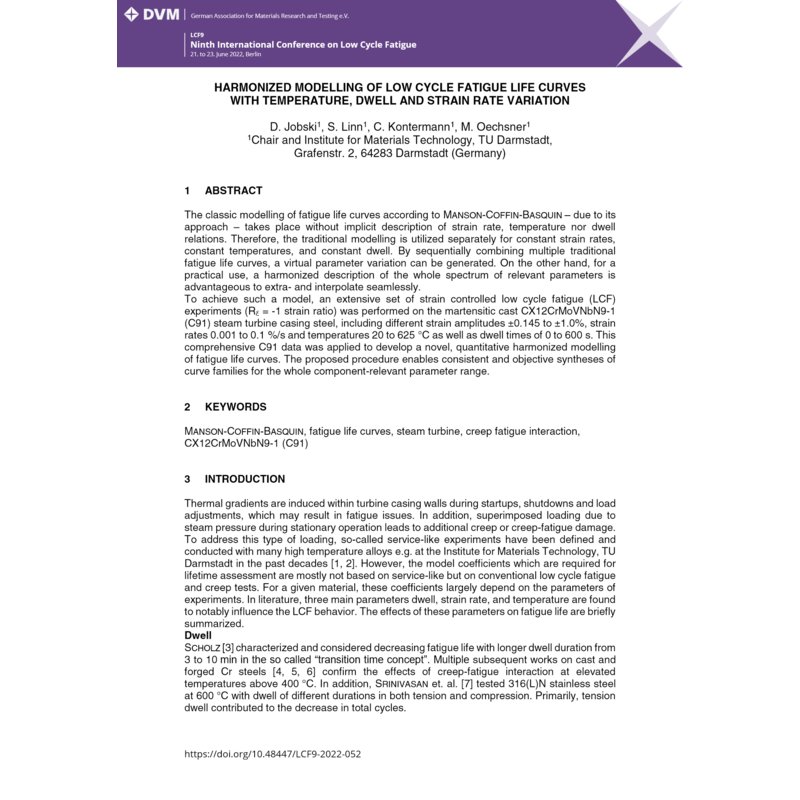- Online only



During startup and shutdown transients of turbine components, thermal gradients are introduced to casing walls which may result in fatigue issues. In addition, superimposed loading due to operating pressure during stationary operation lead to additional creep or creep-fatigue damage respectively. To address this type of loading, so called service-like experiments have been conducted at many high temperature alloys at the Institute for Materials Technology, TU Darmstadt in the past decades. However, the model parameter which are required for a classical lifetime assessment approach are mostly not rely on service-like but on conventional low cycle fatigue (LCF) and creep tests. Therefore, an extensive set of strain controlled LCF experiments was performed on the martensitic cast…

Datenschutzbedingungen (bearbeiten im Modul "Kundenvorteile")

Lieferbedingungen (bearbeiten im Modul "Kundenvorteile")

Rücksendebedingungen (bearbeiten im Modul "Kundenvorteile")
During startup and shutdown transients of turbine components, thermal gradients are introduced to casing walls which may result in fatigue issues. In addition, superimposed loading due to operating pressure during stationary operation lead to additional creep or creep-fatigue damage respectively. To address this type of loading, so called service-like experiments have been conducted at many high temperature alloys at the Institute for Materials Technology, TU Darmstadt in the past decades. However, the model parameter which are required for a classical lifetime assessment approach are mostly not rely on service-like but on conventional low cycle fatigue (LCF) and creep tests. Therefore, an extensive set of strain controlled LCF experiments was performed on the martensitic cast CX12CrMoVNbN9-1 (C91) steam turbine casing steel. These include experiments with RꜪ = -1 strain ratio at different strain amplitudes ±0.175% to ±1.0%, strain rates 0.001%/s to 0.1%/s and temperatures 20°C to 625°C as well as dwell durations 0s to 600s.
The classic modelling of fatigue life curves by Manson Coffin – due to its approach – takes place without implicit description of strain rate, temperature nor dwell duration relations. Hence the classic modelling is traditionally utilized separately for constant strain rates, constant temperatures and constant dwell durations. By sequential combining of multiple classic modellings a virtually parameter variation can be generated based on a so called factorization concept. Here a factorization implies a manual graphical displacement of curves considered within adjacent parameters ranges as constraints.
On the other hand, for a practical use a harmonized description of the whole spectrum of relevant parameters is advantageous to extra- and interpolate seamlessly. In this work the above mentioned data set were used to develop and apply a novel, quantitative modelling of C91 fatigue life curves. Core points of the harmonized modelling are (1) an extended parametrization of the Manson Coffin approach to consider influential quantities and (2) a multidimensional regression for determination of elastic and plastic surfaces as well as (3) a discussion by comparison based on applied statistics. In the end, the harmonized modelling is used as an input for re-evaluating a series of conducted isothermal and non-isothermal service-like validation experiments in order to gain a better understanding with regard to creep fatigue lifetime assessment.